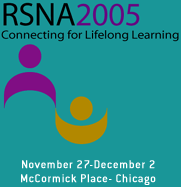
Abstract Archives of the RSNA, 2005
SSQ01-06
CAD-performance on Histologically Verified Breast Masses: Analysis of Influencing Factors and Morphologic Characteristics of False-Positive and False-Negative CAD-Results according to BI-RADs Scheme
Scientific Papers
Presented on December 1, 2005
Presented as part of SSQ01: Breast (Computer-assisted Detection)
Ansgar Malich MD, Presenter: Nothing to Disclose
Katharina Naumann, Abstract Co-Author: Nothing to Disclose
Dorothee R Fischer MD, Abstract Co-Author: Nothing to Disclose
Mirjam Facius MD, Abstract Co-Author: Nothing to Disclose
Christiane Marx MD, Abstract Co-Author: Nothing to Disclose
To determine typical features of falsely detected benign and falsely not detected malignant lesions and to verify influencing factors.
Randomly selected conventional mammograms (no preselection) containing 221 malignant and 49 benign lesions were analyzed using Second look, V6.0 (iCAD, USA).
All lesions were evaluated according to BI-RADs scheme in consensus of at least 2 radiologists. Largest diameter was calculated and size-groups created
(1-10mm:G1; 11-20mm:G2; 21-30mm:G3; 31-40mm:G4; >40mm:G5)
CAD-results were matched to these lesions in consensus.
189/221 malignant and 20/49 benign lesions were correctly analyzed by CAD (S: 85.5%; Sp:40.8%).
171/472 mass markers in the malignant group were false positive (malignancies) and 83 within the benign group (FP 0.39/image in malignancies and 0.84/image in benign group).
TP/TN rate of CAD in relation to mass size was: G1: 67.4%/72.7% (29/43 and 8/11 resp.); G2: 88.8%/30.4% (88/99 and 7/23, resp.); G3: 95.4%/35.7% (62/65 and 5/14, resp.); G4: 77.8%/- (7/9 and 0/1, resp.) and G5: 66.7%/- (4/6; -).
TP/TN rate of CAD regarding ACR was (absolute numbers in parenthesis) ACR1: 97%/-(31/32 and 1/1, resp.); ACR2:90.2%/81.2% (83/92 and 13/16); ACR 3: 78.7%/45.4%(59/75 and 10/22); ACR 4: 72.7%/60.0% (16/22 and 6/10)
CAD detected 6/15 malignant lesions radiologically scored as BI-RADs 0-2 (taking into account mass only) and failed in 22/200 being radiologically scored as BI-RADs 4/5. CAD correctly not detected 3/8 benign lesions scored radiologically as BI-RADs 4 (only mass analysis) and failed (falsely marked) 14/27 benign lesions radiologically belonging to BI-RADs 2.
Most common features of wrongly marked benign lesions were: oval; microlobulated; spiculated lesions (71.4% of oval and 75% of microlobulated and 75% of irregular benign lesions)
Most common features of wrongly not marked malignancies were: superposed, unsharp lesions (22.2% of superposed and 17.3% of unsharp malignancies).
CAD detects few malignancies not detected by radiological evaluation and fails on others radiologically detected. Lesion-related specificity of CAD is still low. CAD-performance of masses is influenced by mass size and density.
Malich, A,
Naumann, K,
Fischer, D,
Facius, M,
Marx, C,
CAD-performance on Histologically Verified Breast Masses: Analysis of Influencing Factors and Morphologic Characteristics of False-Positive and False-Negative CAD-Results according to BI-RADs Scheme. Radiological Society of North America 2005 Scientific Assembly and Annual Meeting, November 27 - December 2, 2005 ,Chicago IL.
http://archive.rsna.org/2005/4410771.html

